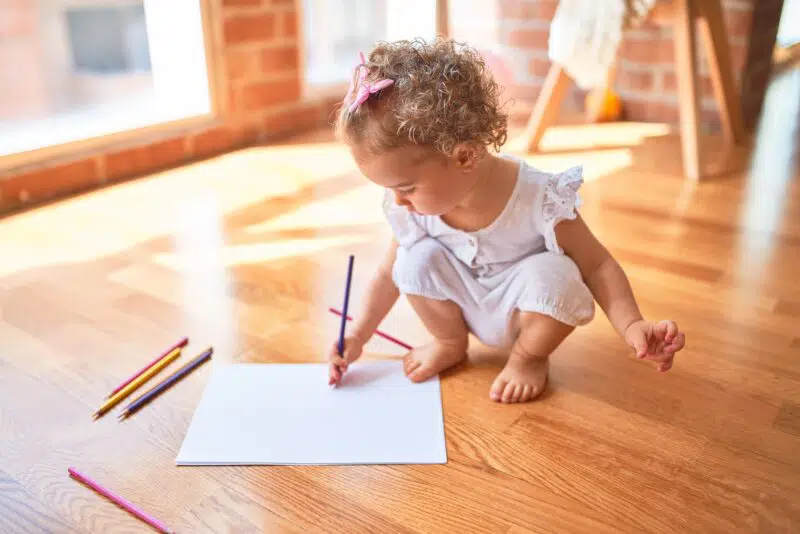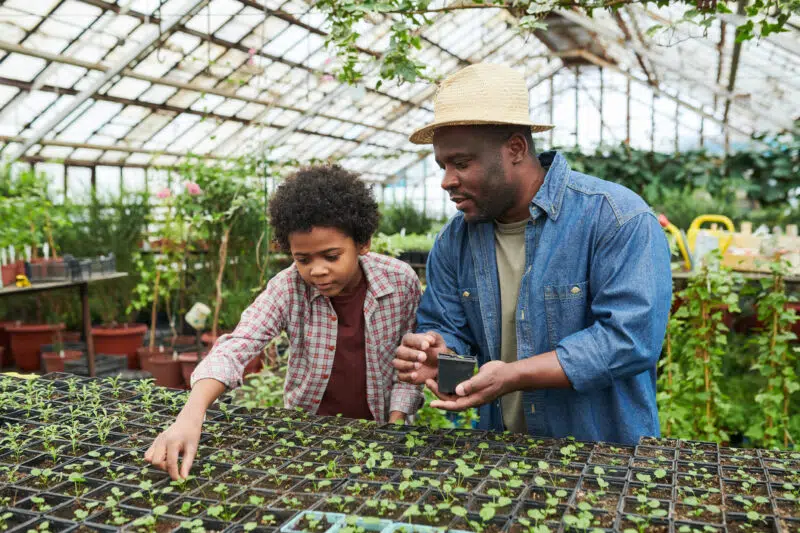Homeschooling without a curriculum? What? Have you thought about homeschooling your children but don’t know how you’ll handle the paperwork, pay for expensive curriculum materials, or master lesson planning?
Yeah, me too.
You might be surprised to learn that about ten percent of homeschoolers in the U.S. use no curriculum and do no formal lessons. Also known as unschoolers, these child-led homeschoolers rely on real-life experiences and real-life learning for most of their children’s education.
Make you nervous?

The most difficult part, or the biggest obstacle to homeschooling, is changing your mindset. Homeschooling is not taking traditional or conventional schooling into the home. It is turning your idea of education on its head and reinventing (or embracing) how children truly learn best one by one.
So, when we started homeschooling, we decided to start by unwinding what we knew about being in a school classroom outside of the home. In essence that meant we unschooled for several months. I took time to observe my kids, which was illuminating.
If you’re a parent exploring schooling options for the first time or already have older kids in a traditional school, this post introduces you to unschooling.
What is Unschooling?
Unschooling doesn’t have an official definition agreed on by all unschooling families. It is a child-led, curriculum-free style of homeschooling that relies on learner-chosen activities instead of formal lessons. Students are typically free to pursue their interests while parent-educators act as facilitators or guides. In other words, they supply the necessary materials and experiences to explore what a child chooses to study in depth.
For example, a child who loves to bake will work with cookbooks, instructional baking videos, field trips to local bakeries, and various kitchen supplies. As they learn to make cakes, they also learn mathematics and chemistry inherent to baking.
Unschooled children are typically encouraged to participate in “real-life” experiences, such as changing the oil in the car or sewing a button. These experiences are considered a vital part of the child’s education.
Nature study or wildschooling – a homeschool philosophy that emphasizes connection with nature – is also popular in unschooling families. Many unschoolers choose to spend most of their time outside in natural spaces.

Unschooling Versus Homeschooling
Other types of homeschooling frequently overlap with unschooling, such as –
Gameschooling – homeschooling that heavily incorporates board games, card games, video games, or other game-based approaches and focuses on learning through play
Worldschooling – homeschooling is primarily based around travel, especially international travel, and emphasizes cultural exchange and relationship building
Roadschooling – another travel-based homeschooling model, road schooling tends to be more localized than world schooling and is focused on road trips.
Forest schooling – similar to wildschooling, forest schooling has a heavy emphasis on time spent in nature. It often focuses on survival skills such as fire-building, orienteering, and knot-tying.
However, no educational method is entirely off-limits for an unschooling family! While some children delight in Charlotte Mason-style copy work, other children thrive in a more formal, teacher-led class on topics of interest. When a child follows his interests, he is unschooling, even if it looks like more traditional schooling from an outside perspective.
What’s the Difference Between Homeschooling and Unschooling?
Homeschooling is an umbrella term that refers to any home education. Even virtual schooling options provided by a brick-and-mortar school are considered homeschooling. Unschooling is simply a specific type of homeschooling.
Many homeschoolers choose to replicate the school environment for home education – using curriculums, textbooks, assignments, grading, and so on. Unschoolers, on the other hand, don’t attempt to structure their school days in a way that resembles a traditional school.
While brick-and-mortar schools and many teacher-led homeschooling methods emphasize tests, grades, and other external performance measures, unschoolers prioritize the child’s experience and autonomy.

What is Unschoolers Curriculum?
Since unschooling has no set framework, every school day can look different! On any day, unschoolers might catch tadpoles, draw at an art museum, play Minecraft with friends, golf, cook a new recipe, or plant a garden. Almost any activity you can think of can fit into a school day for an unschooling family.
Many parents are worried that without the structure of a traditional educational model, their children will do “nothing” all day. It’s true that many unschoolers choose to navigate their days at a more relaxed pace than they would in a traditional school. However unschooling children and families are typically quite active and explore several interests.
When unschooled children seem bored or directionless, many unschooling parents will practice strewing. The act of strewing is when parents intentionally leave out materials that might spark a child’s interest in a new subject. Examples might include a chess set, a sketchbook, or children’s encyclopedias.
